All photos: Leica Digilux 2. Using a pole to hold out the jib when sailing downwind.
Part one: Setting up a more efficient rig for windward and downwind work.
No one wants to motor when they could be sailing. The wind is free if only we can harness it’s power. Here are some suggestions, tricks and secrets I have learned over the years that have allowed me to sail my boat when most people have given up and started their engine.
Most yachts today are a huge compromise between ease of use and cost of manufacture. The two sails of a sloop work for some of the time and when they don’t serve, the sailor can use his reliable diesel engine to get where he wants to go. Boats are expensive and it’s a very competitive market so yachts are rarely sold with the extras that make them more efficient.
Many sailors hate running downwind but I don’t know why. When a yacht is properly set up, there is no more pleasant way to eat up the miles. The problem is that the basic sloop rig is not set up to run down wind. The modern solution is to fly a spinnaker but it’s hardly a simple solution. Why not use the sails that are already on the boat? Simply polling the Genoa out on one side and putting the main on the other is an excellent way to sail down wind yet I am constantly amazed how rarely I see this technique employed.
One of the great things about this set up is that it can work from a broad reach to a dead run. Here’s how it works. Lets say that the wind is coming from aft but slightly more on the port side. Let the main sail out to starboard. Take a line from the end of the boom and tie this ‘Preventer’ line to a cleat up forward. Now the boom cannot move or the sail chafe against the rigging as the boat rolls. Also, if you were to steer a bit wild, the preventer will stop the sail from gybing.
Then pole out the genoa on the opposite side to the mainsail. The lazy sheet is tied down to the foredeck as this stops the pole from lifting. In an ideal world, the genoa should be held out so that it is flat, this way it will not flap about and make noise. Now you have a fabulous set up for running downwind that only cost you the price of the pole and mast fitting. If your boat already has a spinnaker pole and track you may already have all you need. You don’t even need a topping lift for the pole as the sheets will hold it in place.
Since the area of your main and genoa approximate the area of a spinnaker you do not sacrifice as much sail area as you think and this works surprisingly well and once set up does not need much looking after. If your boat is cutter rig, you can even hoist the staysail and sheet it ‘fore and aft’ to help reduce rolling.
Note the tell tales on the genoa flying straight and true. This is the sign of a well trimmed sail.
Most modern boats sail well to windward but there are still ways to improve on the situation and efficiency of the existing rig. Perhaps the most important item you can add are tell tails on the sails. There have been many articles written about tell tales so I am only going to cover them briefly. On the Genoa, these are fitted a small distance behind the luff. Small windows in the sail allow you to see the tell tales on both sides. When all the tell tales are flying straight, the sail is properly trimmed and working at maximum efficiency.
Windows in the jib allow the tell tales to be seen on both sides of the sail.
The mainsail needs tell tales fitted to the leech. Start by trimming the genoa. The tell tales can even tell you if the sheet lead is correct. Once the genoa is properly trimmed, trim the mainsail until all the tell tales are flying. Don’t worry if the main is back winding a bit, the most important thing is to get all the tell tales flying. Tell tales cost next to nothing too and help you to learn the best positions for the sails, leads and angles so that you can get the most out of your boat by ‘seeing’ the wind.
All tell tales flying from the leech of the main sail.
In light airs and choppy seas, do not ‘pinch’ instead come off the wind a little for more speed. If the seas are choppy try introducing a little ‘twist’ in the sails as this helps the sails keep power in them as the boat pitches.
Sail Faster and more often Part 2: Parasitic Drag
One aspect that is often overlooked when trying to improve sailing efficiency upwind is Parasitic Drag. Additions such as dodgers may make sailing more pleasant but they cause drag and will slow the boat down. Dinghies, lifelines, outboards , mast steps or almost anything attached to the boat will cause drag. The effect of Parasitic drag can be quite drastic so anything you can do to reduce it will enable you to sail higher and faster to windward. Many dodgers (sprayhoods) are huge and run the full width of the boat, does it need to be that high? Perhaps the dodger could be made smaller and just cover the companionway hatch. Can the outboard go in a locker?
Another way to increase speed and efficiency is to consider what is going on under the waterline. Even a slightly grubby bottom can cause a lot of drag so it’s worth considering the type of antifouling you are using. Every year the paint builds up until the surface is quite rough, and this will slow you down even if there is no growth. Consider using an antifouling like Coppercoat which is not only efficient but is also smoother than conventional paints as it is only applied once every ten years or so.
Anything under the waterline that is not smooth or hydrodynamic will cause drag. Anodes and sea cocks are an example. If the anodes are not being corroded much, consider fitting smaller ones to reduce drag. There is a reason why racing boats have no skin fittings and often no antifouling at all. Dennis Conner’s boat Cotton Blossom didn’t have antifouling. Instead she was sprayed with a red epoxy paint that looked like antifouling and it was sanded down with fine wet and dry sandpaper to get the surface as smooth as could be and scrubbed by a diver when it started to get slimy. Obviously few sailors are going to get as anal as this in the quest for speed but Mr Conner won every race he entered with her.
Perhaps the biggest cause of drag under the water is the boat’s propeller. Even a fixed 2 blade prop will cause a large amount of drag and cause turbulence over the rudder, especially if it is fouled. In moderate winds the loss is probably not particularly noticeable but in light airs and choppy seas it could make the difference between being able to sail or having to start the engine. Even though it seems odd, it is a scientific fact that a stopped prop will actually cause less drag than a rotating prop so locking the prop can help. If you have a two blade prop it might be possible to lock it in a vertical position behind the keel to reduce drag. If you have a fixed three blade prop then you are really sacrificing sailing performance.
The answer is to fit a feathering or folding prop. Folding props are very good for reducing drag but they do not work so well when motoring so a feathering prop is the best overall solution. There are many different brands on the market but they can be very expensive. One problem with most feathering props is that there is always at least one blade that cannot align with the flow and so there is always some drag remaining. A clever solution to this problem is made by Kiwiprop. Here is a three bladed feathering prop that has plastic blades and a stainless hub. There is no need to fit an anode and the pitch can be adjusted without having to take the prop apart. The blades are all independent so they each follow the flow with the minimum of drag. The Kiwiprop is suitable for engines up to 55hp and is also the cheapest feathering prop on the market.
With a feathering prop fitted sailing performance, especially in light airs will be greatly improved and with no loss in motoring performance, in fact you may well find that that also improved, especially if you are changing from a fixed two blade. If you want to improve sailing performance a feathering prop is one of the most cost effective ways to do this.
Sail faster and more often Part 3: Adding weight
Another way to spoil sailing performance is to add weight to a boat. Of course much depends on the type of yacht you have, a heavy displacement yacht will be able to soak up more weight without detriment than a light weight yacht will. The distribution of weight also has a crucial effect on sailing performance, if not safety.
If you must add weight, the best place to put it is as low and as near the centre of the boat as possible. Obviously this isn’t always possible and there isn’t much you can do to change the basic design of a boat to improve it but it’s worth bearing in mind nevertheless.
It is always wise to keep weight out of the ends of the boat as this will reduce pitching. Yet I often come across boats that have 100m or more of heavy anchor chain stowed right in the bows and this can have a tremendous effect on a yacht’s sailing performance. Do you really need all that chain? How often do you need to anchor in 30m of water? Many modern anchors are designed to work with a small piece of chain and the rest of rope which is much lighter and easier to handle. If you no longer use chain, you might find you no longer need that heavy windlass either.
The same applies to other items, such as outboards, dinghies, gas bottles and liferafts etc. The further you can stow them from the ends the better. Careful placement of stores down below can also make a difference. By putting heavier items such as tins and fluids as low as possible, and placing the lighter items elsewhere great savings can be made. I know all this seems excessive but if you consider this weight issue all the time, you will find yourself sailing more often and the boat will be stiffer and roll and pitch less which is more comfortable too. Like many things, it’s not just one thing that makes the difference but an accumulation of many small actions that add up.
The rig of a boat has a massive influence too. The more stuff you add to the mast, in the form of antennas, radomes etc the more tender and pitchy the boat will become but even here savings in weight can be made. Ropes are heavy, so you might be able to reduce the diameter of the halyards and save quite a bit of weight here. Consider using wireless instruments since you can lose entire cables this way. The use of LED lighting may allow you to use lighter electrical cables too. I know it doesn’t sound much but every little helps.
Sail faster and more often Part 4: Light weather sails
One of the best sails you can buy for light air sailing is an MPS. There are a lot of different names for this sail but it’s basically an asymmetric spinnaker. The big difference between this and a normal spinnaker is that it is flown like a jib with only a pair of sheets and is therefore much easier to use. The MPS can really make the difference between sailing or motoring. As I type this we’re sailing at over 5 knots with a really light beam wind and have already passed any number of yachts motoring. The MPS is capable of using apparent winds from about 70 degrees to 140 degrees so is a useful sail to have.
At first the MPS can seem an intimidating sail to hoist and retrieve but as many things there are techniques that will help. The best to way to launch the MPS is to hoist it behind the set jib, this way it cannot fill. As soon as the MPS is up, drop or roll the jib and the sail will fill. An MPS is a very powerful sail and needs to be treated with respect but so long as you get it hoisted before it fills it is quite docile.
Normally the MPS has two sheets so that it can be gybed but I find this too complicated and the long lazy sheet has a habit of getting drawn under the boat. Instead I use only one sheet and hoist the sail on whichever side I need at the time. Normally the sheet will need to be led to the back of the boat to get a good lead. A block can be affixed in the appropriate place without much difficulty and then lead to a genoa winch. Often the MPS works best without the luff being tight, so experiment by either letting the halyard go a bit or easing off the tack. I use a 6-1 tackle on the tack of the sail which makes adjustment very easy. The MPS also works best by not being over sheeted and often the best trim is when the luff is gently flopping over from time to time.
Getting the MPS down is a bit harder than getting it up but again, there is a technique. Re-hoist the jib and sheet it in. Then sheet the MPS in hard so that you can reach the foot of the sail from the deck. This job is much easier with two people, one on the halyard and one gathering. Let the halyard go in stages and gather as you go. Because the MPS is blanketed by the jib it will not have any wind in it and will be easier to get on board. I find sitting on the sail I have gathered keeps it from getting out of hand.
Sail faster and more often Part 5: The real secret of sailing more often
When we first came to the Mediterranean we were lucky if we sailed for 25% of the time, now our average is nearer 60%. This massive increase in days sailed is due in part to the improvements mentioned previously but I have saved the best until last. It’s simple, if you want to sail more often, you’ll need to wait for a good wind. It sounds so obvious doesn’t it? Yet this simple fact is at the heart of the matter.
Nowadays, weather forecasting is pretty good and the sailor is able to get great information, usually free from a number of sources. If you have time it is well worth watching the weather and planning your trip around it instead of trying to set an impossible itinerary based on what you would like. We can’t change the weather but we can use it. Rather than setting off with a poor wind why not wait a few days until it changes. In the meantime you could explore the area where you are. Every time we have followed this simple advice we have had good sailing.
We all rush around these days and pay the price. A bit of patience can reap dividends. If you genuinely want to go sailing rather than motoring, all these nuggets of hard learned information will help you. I know, it all seems so obvious and you knew all this anyway but like I said earlier it’s a bit of everything. It’s like varnishing. Many people often ask me what is the secret to beautiful varnish but there is not one secret but many small ones that club together to make for a good result. Even if you miss out one or two of the secrets along the way, you will probably still end up with a good result anyway, but ignore all the secrets and you won’t be happy with the result at all.
Sailing costs very little, it is satisfying, good for the soul and offends no one but motoring on the other hand is noisy, smelly and expensive. Maybe you only consider the cost of the fuel and lets face it, yachts are not economical when motoring. We are lucky if we manage 20 miles to the gallon, and that is with a small boat, but there are other costs to factor in. Every hour you motor wears out the engine, the seals, impellers and bearings. Engines need servicing and that can be expensive so obviously the less often you can service an engine, the more money you will save. Beyond even the cost is the moral issue. What could be better for the environment than a sailing boat, quietly moving from A to B. It’s as close to Perpetual Motion as we mere mortals are ever likely to get.
The satisfaction that comes from a trip made under sail cannot be ignored so it’s well worth making the small amount of effort required to set your boat up and understand the finer points. Happy sailing!
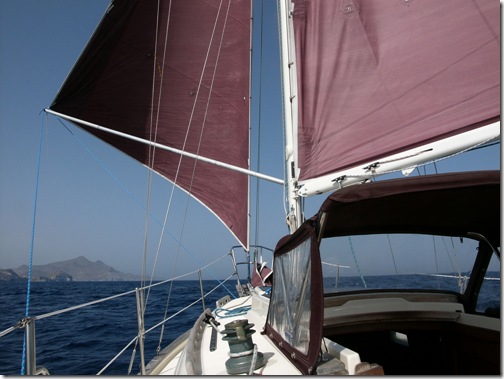
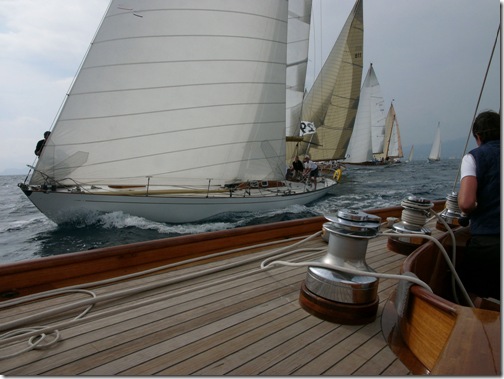
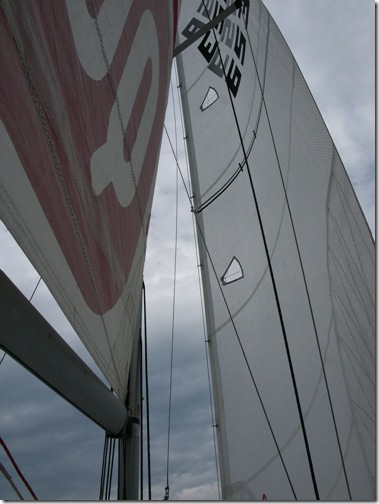
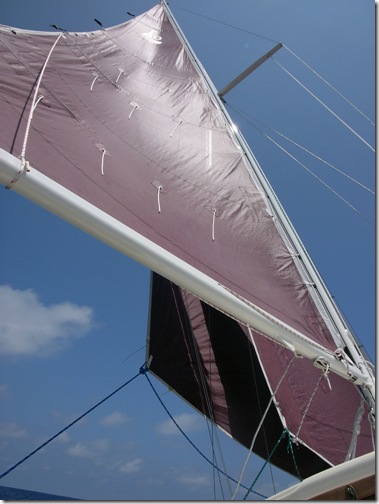
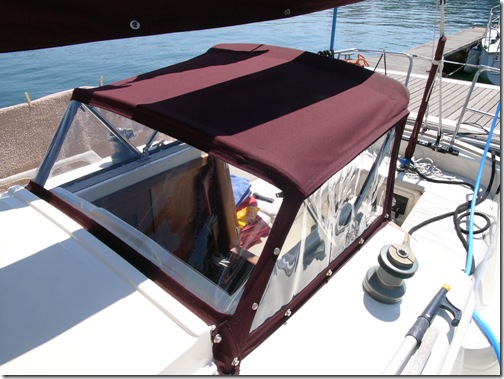
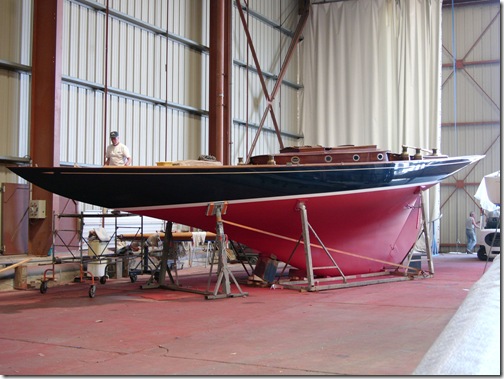
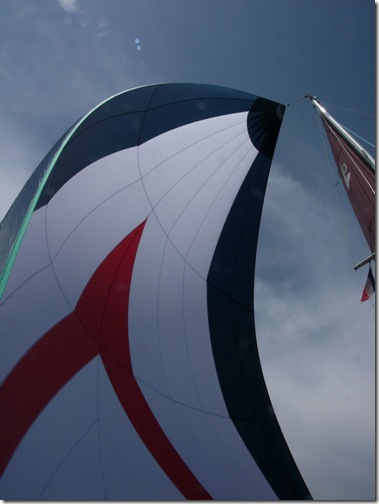
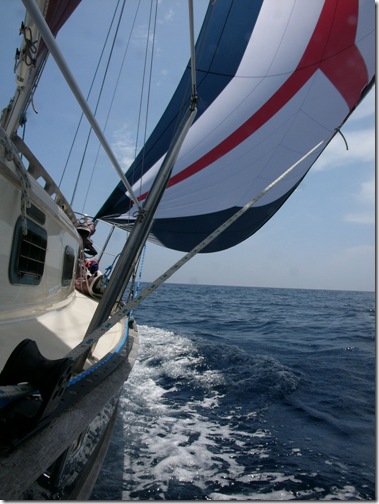
i love to sail even if we do not have our own sailboat :.~
sailing is just like jogging, it is an addictive sport and hobby at the same time -;,
Nice and helpful details. I am about to sign up to your blog site. Thnx. continue the best work